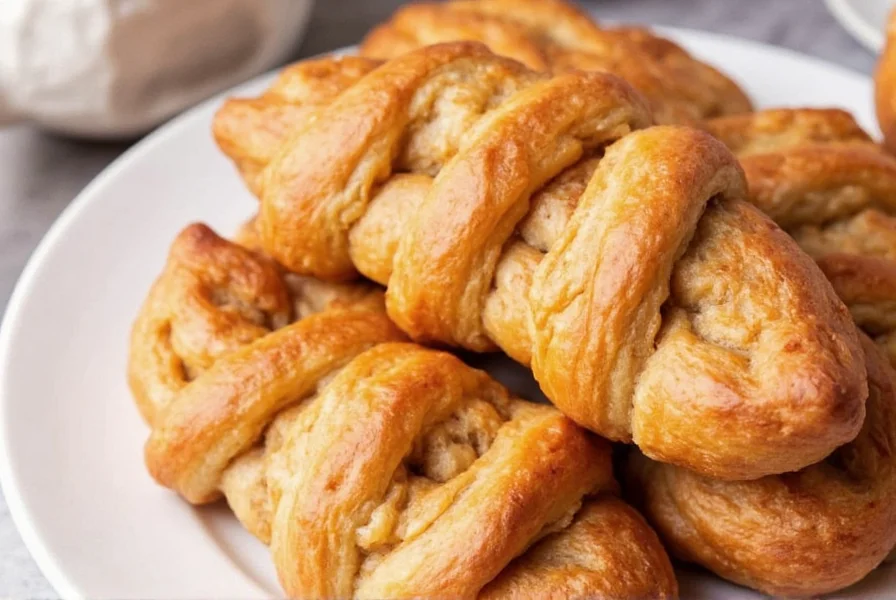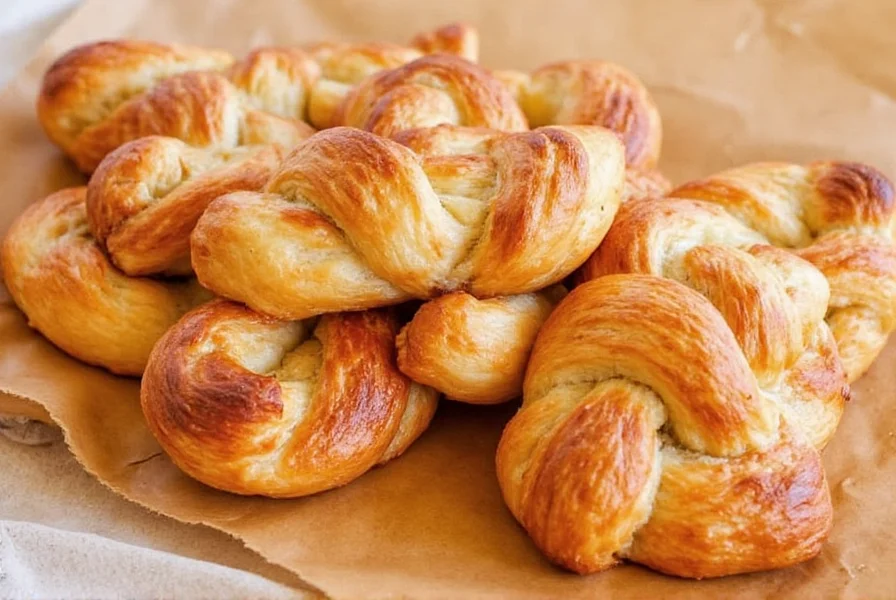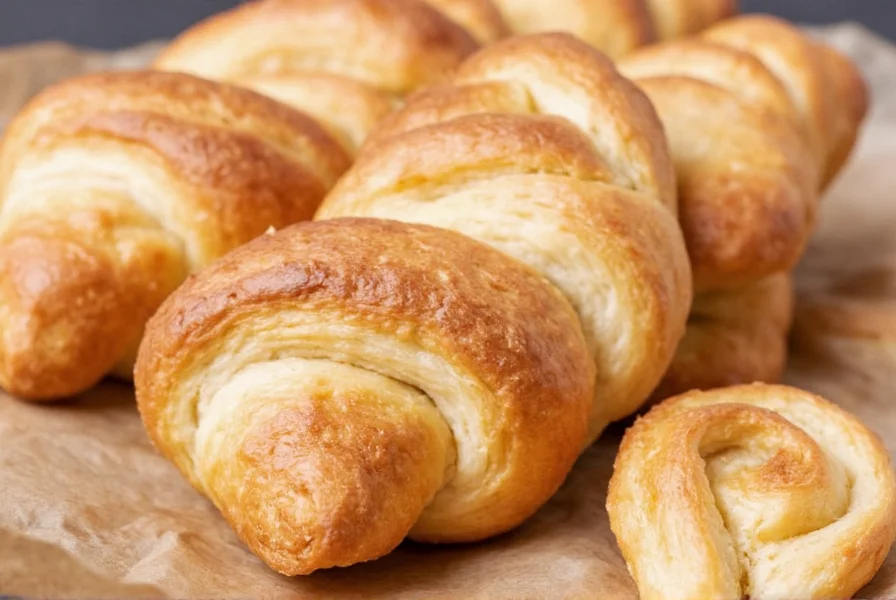What Exactly Are Cinnamon Twists?
Cinnamon twists represent a delightful variation in the world of sweet baked goods, distinguished by their unique spiral shape and generous cinnamon-sugar coating. Unlike traditional cinnamon rolls that are cut into individual portions before baking, twists maintain their elongated form throughout the baking process, creating an attractive presentation perfect for sharing or special occasions.
These pastries have gained popularity among home bakers and professional pastry chefs alike for their versatility. You can create cinnamon twists using various dough bases, from store-bought crescent roll dough for quick preparation to artisanal yeast doughs for more complex flavor development. The essential components remain consistent: a pliable dough base, a buttery cinnamon-sugar filling, and often a simple glaze after baking.
Historical Background of Cinnamon Twists
While cinnamon rolls trace their origins to Swedish kanelbulle, cinnamon twists evolved as a creative adaptation within American baking traditions. The twisted shape likely emerged as bakers sought alternatives to standard rolled pastries, offering both visual appeal and practical advantages in portion control.
Food historians note that the technique of twisting dough appears in various culinary traditions worldwide, from Italian taralli to Eastern European challah breads. The specific application to cinnamon-flavored pastries gained momentum in the late 20th century as baking shows and cookbooks popularized innovative approaches to classic recipes.
Essential Ingredients for Perfect Cinnamon Twists
The magic of exceptional cinnamon twists lies in the quality of ingredients. While recipes vary, the following components form the foundation of outstanding results:
| Ingredient | Function | Quality Tips |
|---|---|---|
| All-purpose flour | Structure foundation | Measure by weight for accuracy (120g per cup) |
| Unsalted butter | Richness and flakiness | Use European-style for higher fat content |
| Ceylon cinnamon | Primary flavor | Superior to cassia for delicate flavor profile |
| Granulated sugar | Sweetness and texture | Combine with brown sugar for depth |
| Active dry yeast | Rise and texture | Check expiration date for reliable results |
Step-by-Step Preparation Guide
Creating professional-quality cinnamon twists at home requires attention to detail but remains accessible for bakers of various skill levels. Follow these steps for consistent results:
- Dough preparation: Combine flour, yeast, sugar, salt, warm milk, and softened butter. Knead until smooth and elastic (about 10 minutes by hand or 7 minutes with stand mixer).
- First rise: Place dough in lightly oiled bowl, cover, and let rise until doubled (60-90 minutes at room temperature).
- Rolling technique: Roll risen dough into 12x16 inch rectangle. Spread evenly with softened butter, then sprinkle with cinnamon-sugar mixture (1 cup sugar + 3 tbsp cinnamon).
- Shaping method: Roll dough tightly from long side, pinch seam to seal. Cut into 12 equal pieces. Take each piece and gently stretch to 10-12 inches, then twist into spiral shape.
- Final proof: Place twists on parchment-lined baking sheets, cover, and let rise 30-45 minutes until puffy.
- Baking process: Bake at 375°F (190°C) for 18-22 minutes until golden brown. Cool slightly before glazing.
Popular Variations for Different Dietary Needs
Cinnamon twists adapt beautifully to various dietary requirements without sacrificing flavor:
- Gluten-free cinnamon twists: Substitute with high-quality gluten-free flour blend containing xanthan gum. Add 1-2 tablespoons extra liquid as GF flours absorb more moisture.
- Vegan cinnamon twists: Replace dairy butter with plant-based alternative and use almond milk. Ensure sugar is vegan-certified.
- Whole wheat version: Substitute up to 50% of all-purpose flour with white whole wheat flour for added nutrition without overwhelming flavor.
- Protein-enhanced twists: Add 1-2 tablespoons unflavored protein powder to dry ingredients for fitness-focused bakers.

Professional Baking Tips for Perfect Results
Seasoned pastry chefs recommend these techniques for exceptional cinnamon twists:
- Maintain consistent dough thickness (about 1/4 inch) when rolling for even baking
- Cool twists completely before storing to prevent sogginess
- For crispier edges, brush twists with egg wash before baking
- Add a pinch of cardamom to the cinnamon mixture for Scandinavian-inspired flavor
- When making ahead, freeze shaped but unbaked twists on baking sheets, then transfer to freezer bags. Bake from frozen, adding 3-5 minutes to baking time
Storage and Serving Recommendations
Proper storage maintains freshness and texture:
- Room temperature: Store in airtight container for up to 3 days
- Refrigeration: Extend freshness to 5 days (though texture may soften)
- Freezing: Wrap individually and freeze for up to 3 months. Thaw at room temperature or reheat in oven
- Reviving stale twists: Warm in 300°F oven for 5-7 minutes before serving
For optimal enjoyment, serve cinnamon twists slightly warm with complementary beverages. They pair beautifully with strong coffee, chai tea, or cold milk. Consider adding creative toppings like chopped pecans, orange zest in the glaze, or a drizzle of caramel for special occasions.

Frequently Asked Questions
What's the difference between cinnamon twists and cinnamon rolls?
Cinnamon twists maintain their elongated shape throughout baking, while cinnamon rolls are cut into individual portions before baking. Twists typically have a higher surface area to volume ratio, resulting in more crispy edges and caramelized sugar. The twisting technique also creates distinctive layers throughout the pastry rather than the concentric circles of traditional rolls.
Can I make cinnamon twists without yeast?
Yes, you can create quick cinnamon twists using refrigerated crescent roll dough or puff pastry as a base. These versions skip the yeast-rising process but still deliver delicious results. For homemade yeast-free options, consider using a biscuit or scone dough base, though the texture will differ from traditional yeast-raised twists.
Why do my cinnamon twists fall apart when twisting?
This typically happens when the dough hasn't rested sufficiently after rolling. Allow the rolled dough to rest for 5-10 minutes before cutting and twisting. If the dough remains too elastic, it will resist shaping. Additionally, ensure your filling isn't too wet, as excess moisture can compromise the dough's integrity during shaping.
How can I prevent my cinnamon sugar from burning?
To prevent burnt cinnamon sugar, use the proper ratio (typically 3-4 parts sugar to 1 part cinnamon) and avoid excessive butter in the filling. Bake at the recommended temperature (375°F/190°C) and monitor closely during the final minutes of baking. Placing twists in the center of the oven rather than near heating elements also helps prevent uneven browning.
What's the best type of cinnamon for cinnamon twists?
Ceylon cinnamon (often called "true cinnamon") offers a more delicate, complex flavor compared to the more common cassia cinnamon. While cassia provides a stronger, spicier profile that many associate with traditional cinnamon rolls, Ceylon's subtlety allows other flavors to shine through. For balanced results, some bakers combine both types in a 1:1 ratio.











 浙公网安备
33010002000092号
浙公网安备
33010002000092号 浙B2-20120091-4
浙B2-20120091-4